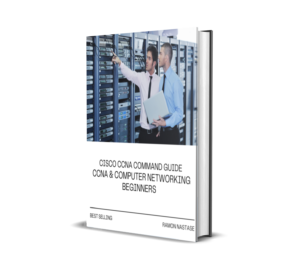RAID Explained How It Works and Why You Should Consider Using It. RAID stands for redundant array of independent disks. This is a technology for using multiple hard drives to create a system that can recover from complete failure. RAID is actually quite old, but it’s still relevant and many people are still using it. What is RAID, why would you need it, and what are the benefits of using it This article will help you understand all of these questions and more. Read on to learn about RAID and how it can benefit your computer and your life.
The Best Java Books for Beginners in 2022
Table of Contents
What is RAID
RAID is an acronym for Redundant Array of Independent Disks. It is a storage technology that allows for the storage of data on multiple hard drives in a way that makes it easier to recover from a failed hard drive. It is an alternative to the traditional RAID 0 (striping) and RAID 1 (mirroring) that is commonly used for data storage. RAID 0 and RAID 1 have their own benefits and drawbacks. RAID 0 has the benefit of offering the ability to have a fast readwrite speed for large files, but it comes at the cost of being vulnerable to data loss. RAID 1 has the benefit of offering the ability to have a fast readwrite speed for small files, but it comes at the cost of being vulnerable to data loss. RAID 0 is typically used for small-to-medium sized files, while RAID 1 is typically used for large-to-massive files.
CCNA Routing And Switching All In One Study Guide BOOK
How does RAID work
RAID stands for Redundant Array of Independent Disks. It is a way of increasing the speed of a computer’s storage system by adding more space for the same price. This is done by splitting data across two or more hard drives and then connecting them to the computer. This allows the computer to read and write data from the drives simultaneously, which gives it a speed boost. This can be a good thing for people who want to save money on their computer and for people who are concerned about data security.
How To Configure Static Routing On 4 Routers In Packet Tracer
Why should you use RAID
RAID is a method of data protection and a technique for error detection. It allows for the redundancy of data across several disks, so that if one disk fails, data is still available. RAID is a method of data protection and a technique for error detection. It allows for the redundancy of data across several disks, so that if one disk fails, data is still available. RAID 0 is the type of RAID that is most commonly used. It is an effective way to protect your data, but it’s not a good method for speed. RAID 0 is a method of data protection and a technique for error detection. It allows for the redundancy of data across several disks, so that if one disk fails, data is still available. It is a good method of protection but it is not a good method for speed. RAID 1 is a much faster method of data protection that uses only one disk. It is an effective way to protect your data, but it’s not a good method for speed. It is a good method of protection but it is not a good method for speed. RAID 5 is a good method of protection, but it is not a good method for speed. It is a good method of protection but it is not a good.
Basic Cisco Router Configuration | Cisco Packet Tracer Tutorial
Conclusion.
RAID is a type of storage solution that is used on computer systems. It is a technique used to increase data protection and speed. There are many benefits to using RAID. For example, RAID is a solution that doesn’t require any software to use. This is a huge plus because it can be used on any computer, which means that it is easy to implement. RAID is also a solution that is compatible with any operating system. It also has high speed and data protection. RAID is one of the best ways to keep your data safe. You should consider using RAID as a way to protect your data.
How To Configure OSPF Multi Area in Packet Tracer – 3 Routers


